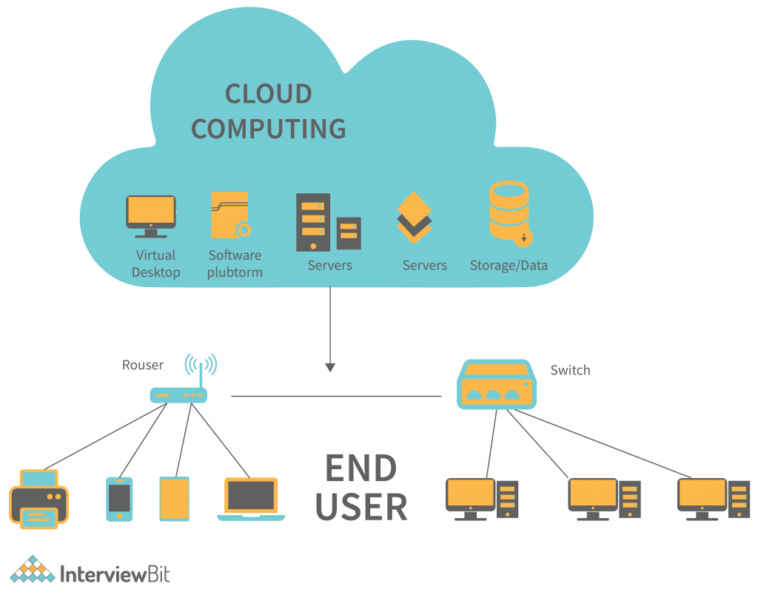Demystifying Cloud Computing Architecture: A Comprehensive Overview
In the age of digital transformation, cloud computing has become a fundamental technology that powers modern businesses and services. Cloud computing architecture is the foundation of this paradigm, enabling organizations to harness the power of scalable, on-demand computing resources. In this article, we will delve into the world of cloud computing architecture, explaining its key components and how it functions.
Understanding Cloud Computing
At its core, cloud computing is a model for delivering computing services over the internet, providing users with access to a shared pool of computing resources, such as servers, storage, databases, networking, software, and more. These resources are often hosted in data centers across the globe, managed by cloud service providers.
Key Components of Cloud Computing Architecture
-
Service Models:
- Infrastructure as a Service (IaaS): In IaaS, users rent virtualized hardware resources like virtual machines, storage, and networking. This allows for greater flexibility and control over the underlying infrastructure.
- Platform as a Service (PaaS): PaaS provides a platform and environment for developers to build, deploy, and manage applications. Users don’t have to worry about the underlying infrastructure, focusing solely on application development.
- Software as a Service (SaaS): SaaS delivers fully developed applications over the internet, eliminating the need for users to install, maintain, or update software. Common examples include Google Workspace and Microsoft 365.
-
Deployment Models:
- Public Cloud: Public cloud services are owned and operated by a third-party cloud service provider, making them available to anyone willing to use them. They are cost-effective and scalable.
- Private Cloud: A private cloud is dedicated to a single organization, providing more control, security, and customization but often at a higher cost.
- Hybrid Cloud: A hybrid cloud combines public and private clouds, allowing data and applications to be shared between them. This offers greater flexibility and optimization.
-
Architectural Components:
- Data Centers: These are massive facilities housing servers, storage, and networking equipment, where cloud service providers host their resources.
- Virtualization: This technology allows multiple virtual machines (VMs) to run on a single physical server, optimizing resource usage.
- Load Balancers: Load balancers distribute incoming network traffic across multiple servers to ensure high availability and improved performance.
- Storage: Cloud architecture relies on different types of storage, including block, file, and object storage, to accommodate various workloads.
- Networking: Network infrastructure connects data centers, servers, and users, ensuring seamless communication.
-
Security and Compliance:
- Identity and Access Management (IAM): IAM solutions control access to cloud resources, managing user authentication, authorization, and privileges.
- Encryption: Data is encrypted at rest and in transit to protect it from unauthorized access.
- Compliance: Cloud providers adhere to various compliance standards, such as GDPR, HIPAA, and ISO 27001, ensuring data security and regulatory adherence.
How Cloud Computing Works
When a user or organization employs cloud computing, they access their chosen cloud service provider through an internet connection. The provider’s data centers, equipped with powerful servers and storage, host applications and data. Users can then request and use these resources as needed, paying only for what they consume.
The cloud provider is responsible for maintaining and securing the infrastructure, ensuring high availability and scalability. Users, in turn, can focus on their core business functions without the burden of managing physical hardware or infrastructure.
Benefits of Cloud Computing Architecture
- Scalability: Cloud computing allows organizations to easily scale their resources up or down, based on demand. This elasticity reduces costs and ensures optimal resource allocation.
- Cost-Efficiency: By eliminating the need for extensive on-premises infrastructure and maintenance, cloud computing can result in significant cost savings.
- Flexibility: Users can choose from a wide range of service models and deployment options to tailor cloud solutions to their specific needs.
- Accessibility: Cloud services are accessible from anywhere with an internet connection, promoting remote work and collaboration.
- Security: Cloud providers invest heavily in security measures, often exceeding what many organizations can afford to implement on their own.
- Reliability: With high redundancy and failover mechanisms, cloud services are highly reliable, minimizing downtime.
Challenges and Considerations
While cloud computing offers numerous advantages, there are also challenges to consider, such as data privacy concerns, potential vendor lock-in, and the need for a reliable internet connection.
In conclusion, cloud computing architecture has revolutionized the way organizations access and manage their IT resources. It offers scalability, flexibility, and cost-efficiency, making it a pivotal technology for businesses of all sizes. Understanding the key components and considerations in cloud computing architecture is essential for harnessing its full potential and achieving strategic business goals in the digital age.




Comments
0 comments